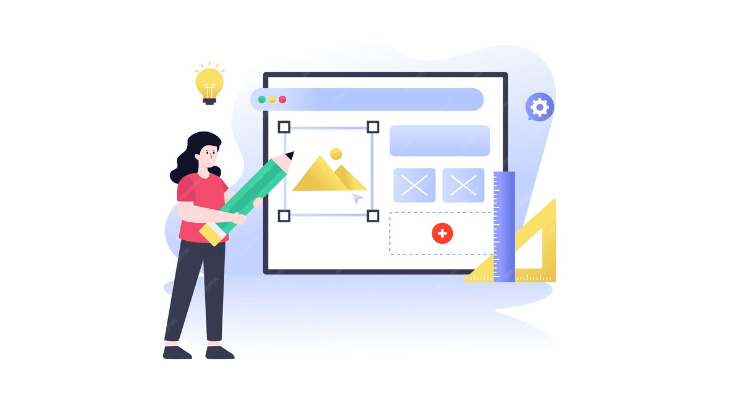On-page SEO factors play a crucial role in improving your website’s visibility and ranking in search engines. These factors refer to all the elements within your website that can be optimized to ensure better search engine performance. Mastering these on-page factors can mean the difference between a top search result and a hidden website. This article will break down the essentials of on-page SEO and explain how to use these factors effectively.
Why are On-Page Factors Important?
On-page factors directly impact how search engines interpret the content, structure, and relevance of a website. These factors help Google and other search engines determine whether your page is a valuable resource. By optimizing on-page elements, you can increase organic traffic, improve click-through rates (CTR), and boost overall user engagement on your site.
Key On-Page Factors You Should Focus On
Knowing which on-page SEO factors to focus on can make optimizing your website simpler and more effective. Here are the most important ones:
- Title Tags and Meta Descriptions
- Title tags and meta descriptions are essential for giving search engines and users a summary of your content.
- Title tags should be concise and keyword-rich, ideally between 50-60 characters.
- Meta descriptions should summarize your content and encourage users to click, aiming for around 150-160 characters.
- Keyword Optimization
- Identify primary and secondary keywords for each page and include them naturally within the content.
- Keyword placement is important, so include keywords in headings, subheadings, and the introductory paragraph.
- Header Tags (H1, H2, H3)
- Header tags organize your content, making it easier for users and search engines to understand.
- H1 tags should represent the main title, while H2 and H3 tags help structure supporting information.
- Internal Linking
- These links help distribute page authority and improve user navigation, ultimately leading to longer user sessions.
- Image Optimization
- Optimize images by using alt tags, which describe the image content for search engines.
- Compress images to improve load times, as faster-loading pages rank higher on search engines.
- Content Quality and Relevance
- Content is the backbone of any SEO strategy. Ensure that your content is relevant, informative, and provides real value to the user.
- Longer, in-depth articles often rank better, but make sure the content stays focused and engaging.
Comparison Table of Top On-Page Factors
| On-Page Factor | Description | Importance |
|---|---|---|
| Title Tags & Meta Descriptions | Brief summaries for search engines and users | High |
| Keyword Optimization | Incorporating relevant keywords naturally | Very High |
| Header Tags | Structuring content with H1, H2, and H3 tags | High |
| Internal Linking | Links within your site to improve navigation | Medium |
| Image Optimization | Alt tags and compression for images | Medium |
| Content Quality | High-quality, relevant content for user satisfaction | Very High |
Benefits of Optimizing On-Page Factors
Optimizing on-page SEO factors comes with many benefits, including:
- Increased Visibility: High-quality content with proper tags and keywords improves visibility on search engines.
- Higher User Engagement: Organized and well-structured content keeps users on your site longer.
- Faster Page Load Times: Optimizing images and compressing files results in quicker load times, improving user experience.
- Improved Ranking: By focusing on these factors, you increase your chance of ranking higher on search engine results pages (SERPs).
How often should on-page factors be updated?
Steps to Optimize On-Page SEO Factors
Follow these steps to ensure your website’s on-page factors are properly optimized:
- Identify Primary Keywords: Use tools like Google Keyword Planner or Ahrefs to find keywords that are relevant and have a high search volume.
- Optimize Title and Meta Tags: Create a unique title and meta description for each page, ensuring they contain your primary keywords.
- Use Structured Headers: Organize content with H1, H2, and H3 tags for better flow and readability.
- Add Internal Links: Link to other relevant pages on your site to enhance navigation and improve SEO.
- Optimize Media: Ensure images are compressed, and use descriptive alt text for each image to improve loading speed and accessibility.
- Check Content Quality: Regularly review and update content to ensure it’s still relevant and adds value to your audience.
Conclusion:
Optimizing factors is essential for any effective SEO strategy. These elements allow search engines to understand your website and help users find value in your content. From keyword optimization to image alt tags and internal linking, each factor plays a unique role in enhancing user experience and increasing visibility on search engines.
Frequently Asked Questions (FAQs)
What are on-page SEO factors?
On-page SEO factors are elements within a website, like title tags, meta descriptions, and keywords, that impact how search engines rank it.
Why are keywords important in SEO?
Keywords help search engines understand your content and improve the likelihood of appearing in relevant searches.
How can image optimization help with SEO?
Optimized images load faster, enhancing user experience, and alt text helps search engines index your images correctly.

